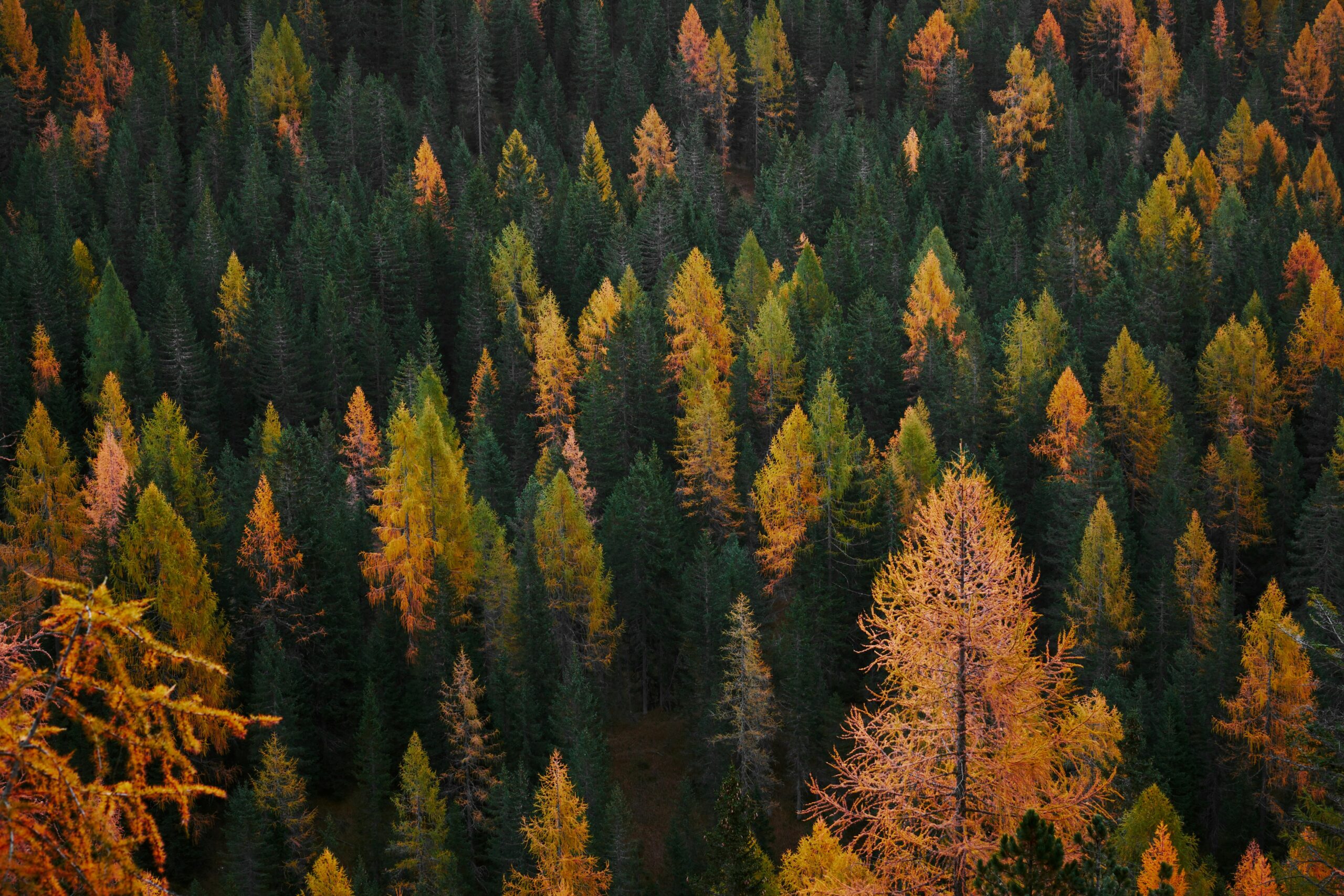Canada, a country renowned for its vast and stunning natural landscapes, boasts a remarkable diversity of forests. These ecosystems stretch from the rugged Pacific coast to the boreal plains, each with its own unique character and ecological importance. Let’s embark on a journey through some of the key forest types found across Canada, with a special focus on the wonders of British Columbia’s forests.
A Tapestry of Tree Regions
Being such a large land mass, Canada has 8 different forest regions across the country. They each offer a distinct ecosystem with a variety of flora and fauna throughout. The forests also provide various human resources, including wood, water, and clean air. And finally, they play an important role in regulating the climate and helping to reduce the effects of climate change.
Boreal Forest
The Boreal Forest is the world’s largest biome, stretching across the northern reaches of Canada and Alaska. This vast coniferous forest is a subarctic region dominated by spruce, pine, fir, and larch trees. The Boreal Forest provides critical habitat for caribou, wolves, and migratory birds.
Subalpine Forest Region
Found on the mountain slopes above the coniferous forests, the subalpine region is characterized by a colder climate and a shorter growing season. Trees in this region are typically shorter and sparser than those at lower elevations, with Engelmann spruce, subalpine fir, and hardy pines being the most common. Subalpine forests provide habitat for mountain goats, marmots, ptarmigans, and other cold-adapted animals.
Montane Forest Region
The Montane Forest Region is a less-used term that can sometimes refer to either the subalpine forest or the entire altitudinal range of coniferous forests in mountainous areas. The characteristics of this region can vary depending on the specific location and elevation.
Coast Forest Region
Located along the Pacific coast of British Columbia, this region is famous for its temperate rainforests. Lush rainforests dominate this region, with towering Douglas firs, Sitka spruces, and western red cedars reaching for the sky. The temperate climate and abundant moisture create a biodiversity hotspot, with animals like bears, cougars, and salmon thriving in this ecosystem.
Columbia Forest Region
The Columbia Forest Region is situated between the Rocky Mountains and the Coast Mountains in British Columbia. This drier region is characterized by a mix of lodgepole pine forests, spruce forests, and grasslands. Wildlife in this region includes deer, elk, bighorn sheep, and grizzly bears.
Deciduous Forest Region
Found in southern Ontario, this region is dominated by broadleaf trees such as maple, oak, birch, and beech. Deciduous forests provide vibrant fall foliage displays and habitats for a variety of wildlife, including deer, foxes, and numerous bird species.
Great Lakes-St. Lawrence Forest Region
Stretching from southeastern Manitoba to the Gaspé Peninsula in Quebec, this region is the second-largest forest region in Canada. Similar to the Deciduous Forest Region, it is dominated by maple, birch, and beech trees. The Great Lakes-St. Lawrence Forest Region provides a habitat for a variety of wildlife, including deer, moose, foxes, and numerous bird species.
Acadian Forest Region
Located in the Maritime provinces of New Brunswick, Nova Scotia, Prince Edward Island, and parts of Quebec, this temperate forest boasts a mix of coniferous and deciduous trees. Sugar maple, yellow birch, and red spruce are prominent in this region, known for its stunning fall foliage. The Acadian Forest provides a habitat for moose, beavers, and various songbirds.
British Columbia’s Forest Riches
British Columbia, with its towering mountains, coastal fjords, and temperate climate, is home to a breathtaking array of forest ecosystems.
- Coastal Rainforest: Hugging the Pacific coast, this lush temperate rainforest is dominated by towering Douglas firs, Sitka spruces, and western red cedars. The Great Bear Rainforest, a UNESCO World Heritage Site, is a prime example of this captivating ecosystem, teeming with wildlife like bears, wolves, and salmon.
- Interior Forests: Moving inland, drier conditions prevail, giving rise to ponderosa pine forests and Douglas fir-lodgepole pine mixed forests. These forests provide habitat for deer, elk, and a variety of bird species.
- Subalpine Forests: Higher elevations boast a subalpine forest with Engelmann spruce, subalpine fir, and mountain hemlock. These hardy trees provide crucial winter habitat for wildlife like mountain goats and ptarmigans.
Exploring Local Wonders: The Alex Fraser & Malcolm Knapp Research Forests
The University of British Columbia manages two exceptional research forests: the Alex Fraser Research Forest in the Cariboo region and the Malcolm Knapp Research Forest near Maple Ridge.
The Malcolm Knapp Research Forest reflects most of the former South Coast. It is a place of pure lakes, luxuriant ferns, and towering Douglas firs and western red cedars. It offers a fantastic outdoor setting where specialists in biology, forest sciences, and outdoor recreation may impart the importance of our natural environment.
Further north, the Alex Fraser Research Forest reflects the variety of forest types found in the Cariboo area. Its gently undulating topography encompasses some separate biological zones: the driest inner Douglas fir forests and meadows, and the moist interior western red cedar woods. It offers a fantastic outdoor setting where specialists in biology, forest sciences, and outdoor recreation may impart the importance of our natural environment.
Unveiling the Mysteries with Wild & Immersive
At Wild & Immersive, our programs take environmental education to the next level. By offering forest school, guided hikes, workshops, and educational experiences within these research forests, they foster a deeper understanding and appreciation for our local ecosystems. Participants gain insights into forest ecology, forestry practices, and the importance of conservation.
Learn more about our events and programs.
Exploring Canada’s Diverse Forests
So, the next time you’re out in nature, look up and take in the forest around you. Whether you explore the flora and fauna found in our research forests on your own or participate in a Wild & Immersive event or program, you’re sure to gain a newfound appreciation for the incredible diversity and importance of Canada’s forests.





